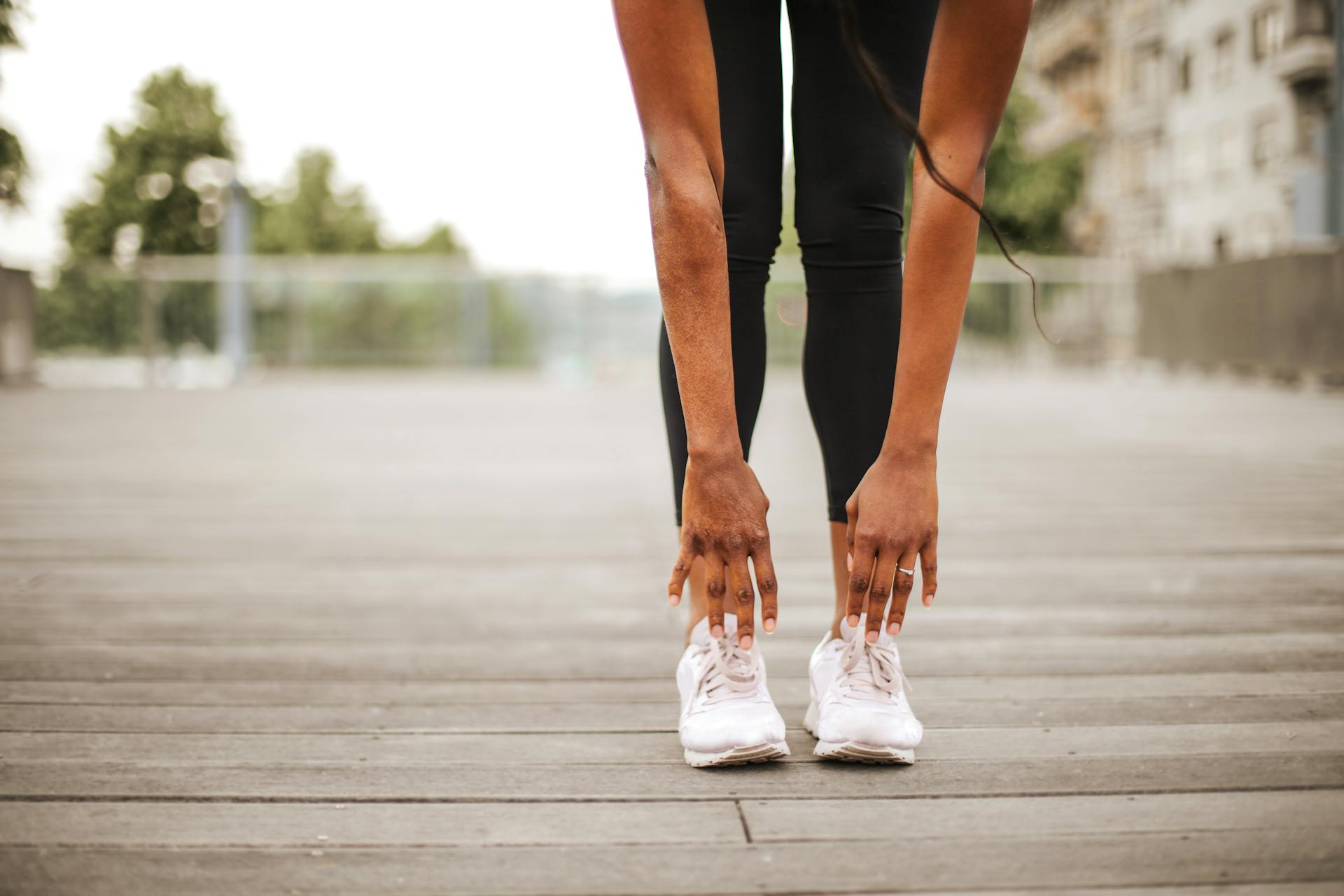The Best Stretches For After a Run and Their Benefits
By Robert Carlson on 06/07/2024- Save on Pinterest
 Finishing your run doesn't mean you should end your workout just yet. Stretching after a run or workout provides many benefits such as optimizing recovery and preventing injury. If you are looking to improve your flexibility, there is no better time to stretch than after a workout. In this post, we will look at the benefits of stretching after a run a few recommended stretches to do.
Finishing your run doesn't mean you should end your workout just yet. Stretching after a run or workout provides many benefits such as optimizing recovery and preventing injury. If you are looking to improve your flexibility, there is no better time to stretch than after a workout. In this post, we will look at the benefits of stretching after a run a few recommended stretches to do.Benefits of Stretching After a Run
As mentioned above, stretching after a run offers several important benefits:- Stretching Reduces muscle soreness and the risk of injury. Stretching also helps reduce the buildup of lactic acid in the muscles, which can lead to soreness and cramping. It also increases flexibility and your range of motion, which can help to decrease the risk of muscle strains and overuse injuries like tendinitis.
- Stretching accelerates recovery. Post-run stretching promotes blood flow to the worked muscles, delivering nutrients and removing waste products. This helps your muscles recover more quickly so you are ready for your next run.
- Stretching improves running efficiency by maintaining flexibility in key areas like the calves, hamstrings, hips, and quadriceps. Over time, stretching can increase your stride length and running economy.
- It can prevent tightness and cramping. Stretching after a run helps prevent excessive tightness and muscle cramping, especially in areas like the calves, hamstrings, and quadriceps that are heavily worked during running.
6 Essential Post-Run Stretches
One thing to keep in mind before doing any of the stretches below is that if you have any leg or lower back issues, you will want to consult with your doctor before trying them.Hamstring Stretches
Standing Hamstring Stretch: Stand with one leg in front of the other, feet hip-width apart. Keep your front knee bent and your back leg straight with the heel on the floor. Hinge forward at the hips while keeping your back straight until you feel a stretch in the back of your straight leg's thigh. Hold for 30 seconds, then switch legs.--OR--
Seated Hamstring Stretch: Sit on the floor with one leg extended straight in front of you and the other leg bent at the knee. Lean forward from the hips, keeping your back straight, and reach toward your toes on the extended leg. Hold for 30 seconds, then switch legs.
Quadriceps Stretch
Standing Quadriceps Stretch Stand with feet shoulder-width apart, holding onto a wall or chair for balance if needed. Bend one knee and grab the top of that foot with the same-side hand. Keep knees together and hips facing forward. Gently pull your foot towards your buttocks until you feel a stretch in the front of your thigh (quadriceps). Hold for 30 seconds, then switch legs and repeat.Calf Stretch
Standing Calf Stretch: Stand facing a wall, about 2-3 feet away. Place your hands on the wall at shoulder height. Step back with one leg, keeping that leg straight with the heel on the floor. Bend the other knee toward the wall. Lean your hips toward the wall until you feel a stretch in the calf of your straight leg. Hold for 30-60 seconds, then switch legs.Hip Flexor Stretch
Lunge Stretch: Start in a split stance, one leg forward and one leg back similar to the stance you would use to do a lunge. Bend your front knee to 90 degrees, keeping your knee over your ankle. Push your hips forward until you feel a stretch in the hip flexors of your back leg. Hold for 30 seconds, then switch legs.IT Band Stretch
Seated IT Band Stretch: First, sit on the floor with one leg extended straight out in front of you. Cross your other leg over the extended leg, placing that foot flat on the floor near your opposite knee. Keeping your back straight, hinge forward at the hips until you feel a stretch along the outside of your crossed leg's thigh. Hold for 30 seconds, then switch legs and repeat.Lower Back Stretch
Child's Pose: Start on your hands and knees with your knees hip-width apart. Sit back towards your heels and extend your arms forward. You should feel a gentle stretch in your lower back. Hold for 30-60 seconds.Tips for Effective Stretching
There are many things you can do to get the most out of your post workout stretching routine. First, it is important to hold each stretch for 20-30 seconds to allow the muscles to relax and lengthen. Next, try to focus on deep breathing and mindfulness to help relax. Being relaxed will help improve flexibility during your stretches. To reduce the risk of injury, avoid any quick, jerky movements during stretching. If you have any problem areas that are particularly sore, it is a good idea to give them more attention. One last tip is to incorporate dynamic stretching before the run to improve performance.Taking a few minutes to stretch after a run can provide a huge number of benefits. So, don't end your workout right when you finish your run, make sure you set a little extra time aside to stretch.
| stretching | exercise | fitness